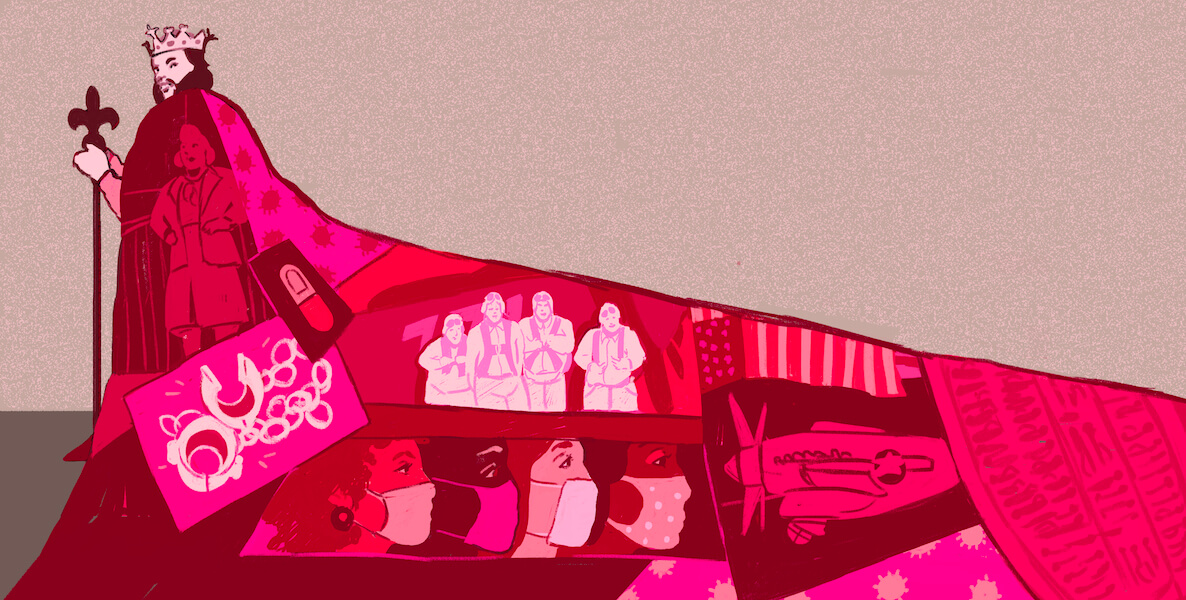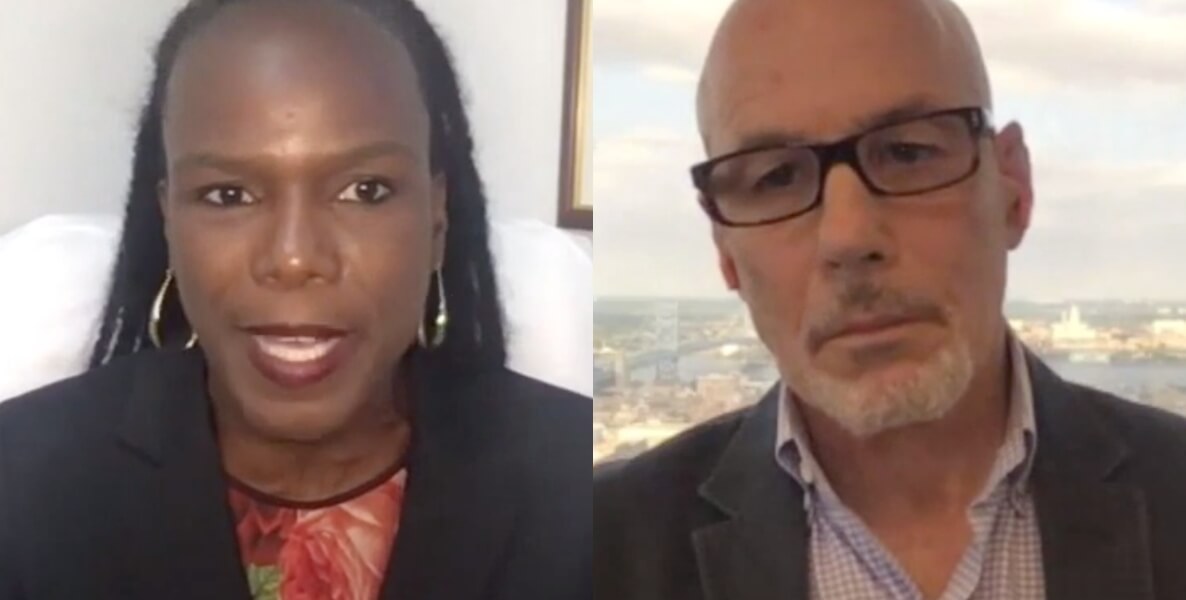![]() By now, scholars, health professionals and even some of us regular folk, know more now about Covid-19 than many or any of us did in the first quarter of 2020. But late last month a group of researchers led by Philly native Dr. Phillip Atiba Goff (at Yale University’s Center for Policing Equity) published research that should change how all of us see this pandemic and the ways that race shapes and informs it.
By now, scholars, health professionals and even some of us regular folk, know more now about Covid-19 than many or any of us did in the first quarter of 2020. But late last month a group of researchers led by Philly native Dr. Phillip Atiba Goff (at Yale University’s Center for Policing Equity) published research that should change how all of us see this pandemic and the ways that race shapes and informs it.
We know that coronavirus impacts the Black community more intensely. Black folks are four times more likely to die from Covid-19. Similar disparities exist for Latinx and Asian communities, vis-à-vis their white counterparts.
But what Goff, a Yale professor of African American Studies and Psychology, and his colleagues have uncovered is something that impacts all of us: The racism that underpins outcomes in the pandemic, also drives the spread of the pandemic. In other words, American racism is making the pandemic worse for everyone.
The engines of misery
People who are in and out of jail (and those exposed to them); essential workers (and those exposed to them); and people who have more contact with law enforcement (i.e., people who are exposed to police) are all driving the spread of coronavirus, according to the research conducted by Goff and his colleagues, Amelia M. Haviland, Tracey Lloyd, Mikaela Meyer, and Rachel Warren. People of color—Black, Brown, Asian, Indigenous—are much more likely to fall into each of these categories.
“Part of the reason why we did this research in the first place, is to show that when we segment off a group of folks and we treat them in ways that are less than human and we don’t provide them with the basic protections against a pandemic we all suffer,” says Goff.
Meanwhile, people who are not essential workers, or who do not worry about being over-policed or over-incarcerated sometimes fall into the groups of those who do not know how they have contracted the virus. “These networks—we call it engines for misery—extend beyond the folks that our society has decided are victims that deserve their terrible lot,” says Goff.
![]() For those who make all of the right decisions and who have the privilege to social distance, work from home and wear masks, there is still no escaping the ways that racism drives the spread of the virus. “We still see how the systems that disadvantage some portions of our most vulnerable populations gets to all of us.”
For those who make all of the right decisions and who have the privilege to social distance, work from home and wear masks, there is still no escaping the ways that racism drives the spread of the virus. “We still see how the systems that disadvantage some portions of our most vulnerable populations gets to all of us.”
Most of the messaging around mitigation focuses on social-distancing and mask-wearing. Stay home they tell us. Across the nation now, states and cities are suspending indoor eating and closing gyms and other public gathering places. But there’s nothing in the messaging that says “Limit your contact with police” or “Make sure that all low-wage workers have PPE,” or “Please monitor if people in your family or community are coming in and out of jail.”
These factors are as significant in the spread of the virus as any others.
“Part of the reason why we did this research in the first place, is to show that when we segment off a group of folks and we treat them in ways that are less than human and we don’t provide them with the basic protections against a pandemic we all suffer,” says Goff.
Building a synthetic city
In this column and elsewhere, the racial lens through which the coronavirus has been viewed tends to focus on a limited set of racial disparities that operate along the coordinates of healthcare, co-morbidities and other health-related inputs and outcomes.
These factors matter in how we think about the pandemic and in how we challenge our elected leaders/officials to systemically address the challenges that many of our most vulnerable communities face.
But Goff and co. have approached the model from a different/distinct perspective and the results of their work should radically change how we address the challenges ahead.
“This is literally the karma of what we’ve done to ourselves because we’ve chosen not to protect a segment of the population on which we rely, whose humanity it is uncomfortable to see.”
Those challenges are formidable. The U.S. has logged over 12 million cases of coronavirus. We are approaching a daily Covid-19 fatality rate of 2,000. In this third wave of the pandemic, as some struggle with “corona fatigue,” and many prepare to navigate a holiday season with/out the familial interaction centered in our holiday experiences, the worst is still on the horizon.
![]() According to modeling used by the researchers, racism is not just an underlying factor in the pandemic; it is the central engine of the virus’ spread. In order to arrive at some of the most stunning research conclusions that have been made public with respect to the coronavirus pandemic, Goff et. al conducted their study through a synthetic metropolitan model.
According to modeling used by the researchers, racism is not just an underlying factor in the pandemic; it is the central engine of the virus’ spread. In order to arrive at some of the most stunning research conclusions that have been made public with respect to the coronavirus pandemic, Goff et. al conducted their study through a synthetic metropolitan model.
That’s because, as Lloyd explains to me, testing and contact tracing is not an exact science in the U.S. “When you look at positive test results, we know that those are only capturing a fraction of all of the real infections that are actually out there,” she says. In order to more accurately capture the actual spread of the virus, these researchers used what they call a synthetic city, that more accurately estimates and projects real spread.
Instead of tracking (or projecting) death rates directly, Lloyd says, their team zeroed in on three factors that directly contribute to infection rates: low-wage ‘essential’ work, police-public contact and what their team refers to as jail and prison “churn.”
For each of these variables Black people are over-indexed or over-represented based upon our percentages in the general population. We work more in low-wage, recently-deemed essential jobs; we are much more likely than our white counterparts to have contact with law enforcement; and our families and communities are more readily in close contact with those who are in and out of the jail and prison systems.
The researchers’ model design is based upon national averages of infection rates and virus spread. Lloyd tells me that “if we wanted to work this up for Philadelphia, we’d have to know the infection rates inside of the local incarceration facilities, inside of the jail systems and the prisons that are sending people back home to those communities. We’d want to use numbers that are local to Philadelphia on the policing front, and also the labor market as well.”
Goff adds that the low-wage essential worker data would likely skew even more disproportionately Black in a city with racial demographics comparable to Philadelphia. “It would be way worse” he says.
The conversation around policing
According to Goff, the focus on these factors reflects the innovative approach to ongoing research at the Center for Policing Equity.
“In the midst of the early parts of Covid, it was clear to us that this was dangerous in terms of how law enforcement might get used, either to enforce social distancing or mask adherence or other sorts of stay-at-home orders and quarantine measures,” he says.
Their research team was also mindful of the fact that law enforcement itself might not take the appropriate measures to mitigate the spread of the virus internally. “The result was that there was not enough PPE available to law enforcement.”
For Goff, the conversation around policing in the Covid-19 modeling experiment became another way of talking about the need to reduce contact with law enforcement overall. We need to, in fact, “shrink the size” of law enforcement.
“We started doing this work before the Floyd lynching” he says. “It’s a public health risk to have law enforcement deployed particularly in areas that are so concentrated, so packed, so blighted by poverty, by disinvestment in education, in green vegetables, in employment, in mental health, and in other services.”
But this is not just about funding or defunding the police—an urgent discussion that needs to be happening now at the level of policy and legislation. Sadly, how we allocate resources for vital services and policing has become a political football used to curtail the important work required to become a more equitable society. Instead, politicians have co-opted “defund the police” to shut down the possibility of developing more robust mental health services and diminishing the institutional racism baked into American policing.
Now we must confront the fact that racism itself is our biggest challenge in the greatest public health crisis of our lifetime. Goff makes it plain: “Our failure to protect the most vulnerable is damning all the rest of us.”
The tragedy of the trajectory of our national conversation about policing in this moment, is that police-public contact is a statistically potent variable in the spread of the virus. And in the midst of a moment where racism in policing has reached a breaking point, the public health challenges with coronavirus and the spread of the virus through police-public contact has simply not been seriously considered until now.
“These three populations [low-wage workers, law enforcement, and individuals subject to jail/prison churn] were responsible for about 70 percent of the [virus] spread—and that’s the conservative estimate,” Goff says.
The numbers within the numbers
To be clear, low-wage workers account for about 53 percent and law enforcement/contact and criminal/legal systems “churn” account for about 16 percent of the spread, but the data in these numbers is no less staggering given where we are in the pandemic as of mid-late November 2020.
![]() The numbers within the numbers are similarly revealing: “40 percent of the gap between Black and White (virus infection rates) was driven by the criminal/legal system amongst the people who were not otherwise made vulnerable by the criminal/legal system or their employment,” according to Goff.
The numbers within the numbers are similarly revealing: “40 percent of the gap between Black and White (virus infection rates) was driven by the criminal/legal system amongst the people who were not otherwise made vulnerable by the criminal/legal system or their employment,” according to Goff.
At this point in the pandemic, it feels to many of us like an unstoppable juggernaut, but Goff assures me it is not. “This is literally the karma of what we’ve done to ourselves because we’ve chosen not to protect a segment of the population on which we rely, whose humanity it is uncomfortable to see.”
We have known for centuries that American racism is an engine for misery in communities of color especially. For months we have been writing and reporting on the devastatingly disparate outcomes of Covid-19 in the Black community and other vulnerable communities. But now we must confront the fact that racism itself is our biggest challenge in the greatest public health crisis of our lifetime. Goff makes it plain: “Our failure to protect the most vulnerable is damning all the rest of us.”
Illustration by Noa Denmon













